Owens & Minor Bundle
How did Owens & Minor go from a small drug company to a global healthcare giant?
Uncover the Owens & Minor SWOT Analysis to understand its evolution. From its humble beginnings in 1882 as Owens & Minor Drug Company, this healthcare distribution powerhouse has shaped the landscape of medical supplies and pharmaceuticals. Explore the fascinating journey of Owens & Minor, a company that has become a critical player in the global healthcare industry.
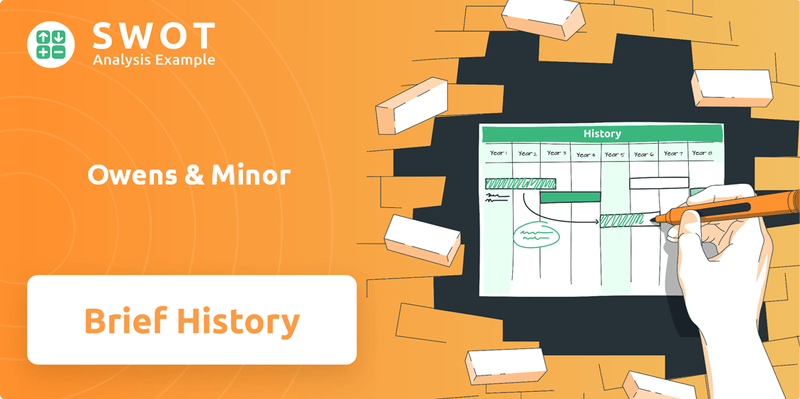
The brief history of Owens & Minor is a testament to strategic adaptation and growth. From its early years as a regional pharmaceutical wholesaler to its current status as a Fortune 500 company, Owens & Minor's commitment to connecting manufacturers with healthcare providers has been unwavering. This journey showcases the company's ability to navigate market changes and maintain a strong presence in the competitive healthcare sector, making it a compelling case study for business strategists and investors alike.
What is the Owens & Minor Founding Story?
The story of Owens & Minor, a prominent player in healthcare distribution, began on January 18, 1882. This marked the official founding of the company in downtown Richmond, Virginia. The company's early years set the stage for its future growth and expansion within the medical supplies and pharmaceuticals sectors.
The founders, Otho O. Owens and George Gilmer Minor II, brought valuable experience to their new venture. Both had worked as traveling salesmen for wholesale druggists in Richmond. Their combined expertise led them to identify an opportunity to serve rural and small-town pharmacists, a segment underserved at the time.
The initial business model focused on pharmaceutical wholesale and retail. The company started operations from a storefront at 1007 East Main Street. They hired their first employee, Joseph Willis, an apothecary, to manage the retail store and develop a line of patent products under the fictitious name 'Dr. David.' Despite facing competition from five other wholesale druggists in Richmond, the partnership secured substantial financing. The company was later incorporated in 1926. You can learn more about the company's evolution by reading about the Growth Strategy of Owens & Minor.
Here's a quick overview of the company's inception:
- Founding Date: January 18, 1882
- Founders: Otho O. Owens and George Gilmer Minor II
- Initial Business: Pharmaceutical wholesale and retail
- Location: Downtown Richmond, Virginia
- First Employee: Joseph Willis
Owens & Minor SWOT Analysis
- Complete SWOT Breakdown
- Fully Customizable
- Editable in Excel & Word
- Professional Formatting
- Investor-Ready Format
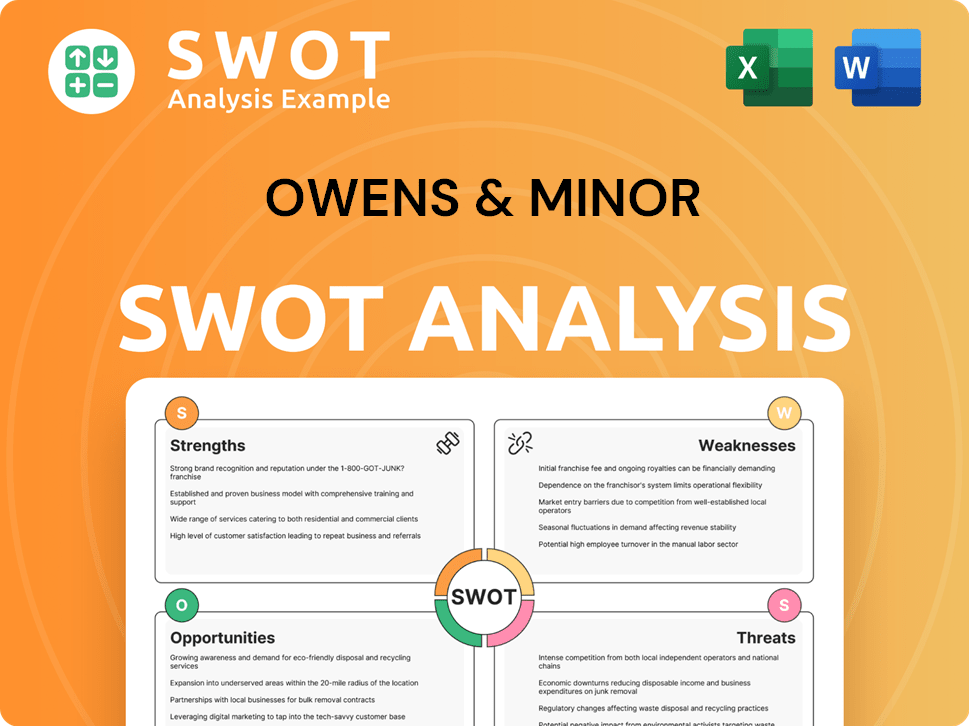
What Drove the Early Growth of Owens & Minor?
The early growth of Owens & Minor was characterized by strategic acquisitions and a significant shift in its business focus. This period saw the company transition from its initial focus on pharmaceuticals to the burgeoning field of medical and surgical supply distribution. The company's expansion during this time laid the groundwork for its future in the healthcare industry. This is a brief history of Owens & Minor.
In 1954, Gil Minor, Jr. acquired Bodeker Drug Company, a Richmond drug wholesaler, leading to the company's name change to Owens, Minor, & Bodeker. A pivotal moment came in 1966 with the acquisition of A&J Hospital Supply, marking the company's entry into the medical and surgical supply distribution industry. This strategic move signaled a shift away from the traditional drug wholesale business. The company was founded in 1882.
Throughout the 1960s and 1970s, Owens & Minor continued to expand its reach. By 1970, the company had opened Cardinal Drug Centers, distributing products to independent drug companies and stocking over 25,000 items within two years. Around this time, the distribution of disposable medical items to hospitals also began. The company also incorporated the PANDAC perpetual inventory system in 1972.
Under the leadership of G. Gilmer Minor III, who became CEO in 1984, Owens & Minor continued its aggressive growth strategy through acquisitions. By 1988, the company began trading on the New York Stock Exchange under the ticker OMI, and its revenues earned it a Fortune 500 ranking. The company divested its wholesale drug division in 1992 to concentrate exclusively on medical and surgical supply distribution.
In 1994, the acquisition of Stuart Medical nearly doubled the company's size. By 1999, the company had refocused toward medical supply chain management. To learn more about the business, you can read more about the business model of Owens & Minor.
Owens & Minor PESTLE Analysis
- Covers All 6 PESTLE Categories
- No Research Needed – Save Hours of Work
- Built by Experts, Trusted by Consultants
- Instant Download, Ready to Use
- 100% Editable, Fully Customizable
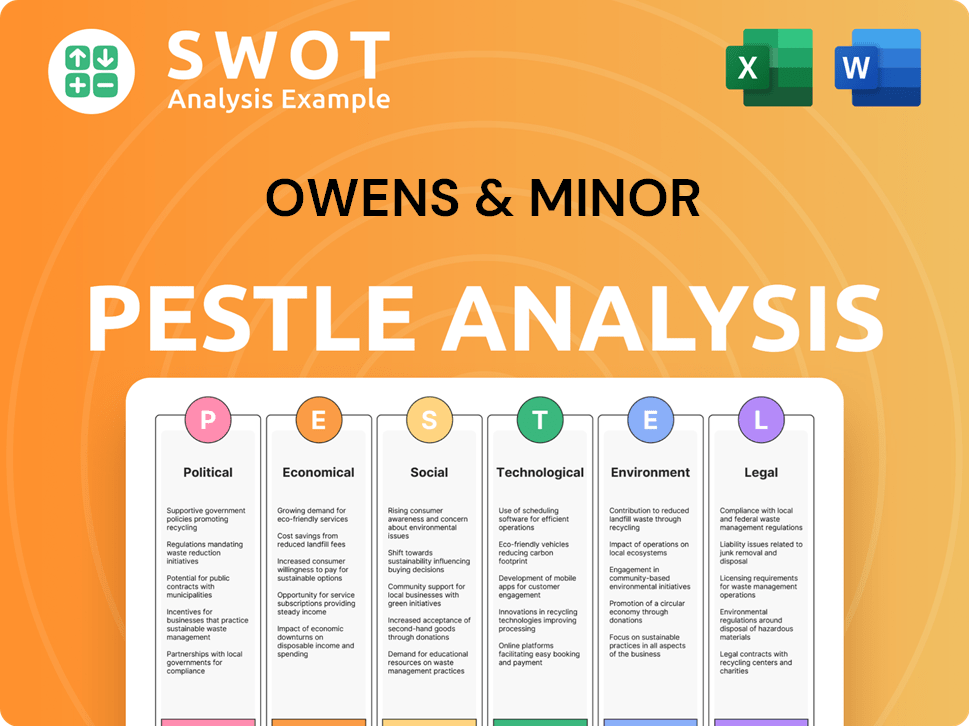
What are the key Milestones in Owens & Minor history?
Throughout its history, Owens & Minor has achieved significant milestones, expanding its reach and services within the healthcare industry. The company has strategically grown through acquisitions and innovations, adapting to the changing landscape of healthcare distribution and medical supplies. This evolution reflects its commitment to providing essential pharmaceuticals and healthcare solutions.
| Year | Milestone |
|---|---|
| 2006 | Acquired the acute-care business of McKesson Medical-Surgical Inc. for $152.1 million, expanding its medical distribution network. |
| 2005 | Ventured into direct-to-consumer distribution of diabetic products, becoming the third-largest player in the mail-order diabetes supply sector within two years. |
| 2012 | Expanded internationally by acquiring Movianto Group, establishing offices in several European countries. |
| 2014 | Acquired ArcRoyal, a medical kit company, further diversifying its offerings. |
| 2018 | Acquired the surgical and infection prevention business of Halyard Health for $710 million, the largest acquisition in the company's history. |
| 2017 | Entered the patient-direct business with the acquisition of Byram Healthcare. |
| 2025 | Terminated the planned acquisition of Rotech Healthcare in June, resulting in an $80 million payment and the redemption of $1 billion in notes. |
Owens & Minor has invested in advanced information technology to improve supply chain efficiency. This includes automated warehousing technology and OMDirect, an internet-based system for electronic commerce with customers and suppliers.
The company's investment in advanced IT, including automated warehousing and OMDirect, has been crucial for improving supply chain efficiency. These technologies streamline operations and enhance the delivery of medical supplies and pharmaceuticals.
Strategic acquisitions, such as Movianto Group, ArcRoyal, and the surgical and infection prevention business of Halyard Health, have expanded the company's global footprint and service offerings. These moves have strengthened its position in healthcare distribution.
Venturing into direct-to-consumer distribution of diabetic products and acquiring Byram Healthcare demonstrates a commitment to reaching patients directly. This approach enhances patient access to essential medical supplies.
Owens & Minor has faced challenges, including the impact of the 1929 Stock Market Crash. More recently, the company has been affected by the global supply chain crisis.
In May 2022, Owens & Minor reported that 45% of its offerings were supply-constrained due to the global supply chain crisis. This highlights the challenges in maintaining a consistent supply of medical supplies.
The company filed a complaint against Anthem Blue Cross and Blue Shield in late 2024, alleging mismanagement of health plans, which led to unnecessary costs. This indicates the complexities of navigating the healthcare industry.
The termination of the planned acquisition of Rotech Healthcare in June 2025, despite believing in its benefits, resulted in significant financial repercussions. This decision highlights the risks associated with acquisitions and regulatory hurdles.
The termination of the Rotech acquisition led to an $80 million payment and the redemption of $1 billion in notes. This underscores the financial impact of strategic decisions and regulatory outcomes.
The healthcare industry is constantly evolving, with changes in regulations, supply chains, and patient needs. This requires Owens & Minor to adapt and innovate to stay competitive. For more insights, explore the Competitors Landscape of Owens & Minor.
Owens & Minor Business Model Canvas
- Complete 9-Block Business Model Canvas
- Effortlessly Communicate Your Business Strategy
- Investor-Ready BMC Format
- 100% Editable and Customizable
- Clear and Structured Layout
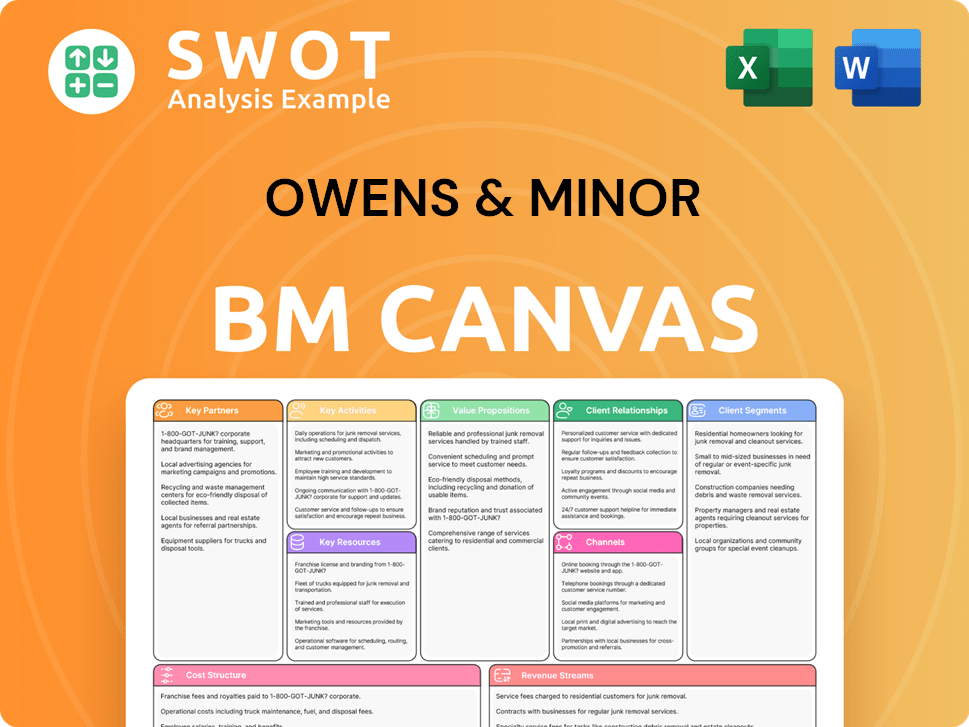
What is the Timeline of Key Events for Owens & Minor?
The Owens & Minor company's journey began in 1882 with the founding of the Owens & Minor Drug Company in Richmond, Virginia, evolving through significant acquisitions and strategic shifts to become a key player in healthcare distribution. Throughout its history, the company has adapted to market changes, expanding its reach and services to meet the evolving needs of the healthcare industry. From its early days in pharmaceuticals to its current focus on medical supplies and supply chain management, Owens & Minor's history reflects a commitment to innovation and growth.
| Year | Key Event |
|---|---|
| 1882 | Owens & Minor Drug Company founded in Richmond, Virginia. |
| 1926 | The company was incorporated. |
| 1954 | Acquired Bodeker Drug Company, and the name changed to Owens, Minor, & Bodeker. |
| 1966 | Acquired A&J Hospital Supply, marking its entry into medical and surgical distribution. |
| 1984 | G. Gilmer Minor III became CEO. |
| 1988 | Began trading on the NYSE under OMI and achieved Fortune 500 status. |
| 1992 | Divested its wholesale drug business to concentrate on medical and surgical supply. |
| 1994 | Acquired Stuart Medical, nearly doubling the company's size. |
| 1999 | Refocused on medical supply chain management. |
| 2005 | Entered direct-to-consumer distribution of diabetic products. |
| 2006 | Acquired the acute-care business of McKesson Medical-Surgical Inc. |
| 2012 | Entered the European market with the acquisition of Movianto Group. |
| 2017 | Acquired Byram Healthcare, entering the patient-direct business. |
| 2018 | Acquired Halyard Health's Surgical & Infection Prevention business for $710 million. |
| 2024 | Reported consolidated revenue of $10.70 billion. Announced planned acquisition of Rotech Healthcare for $1.36 billion (terminated in June 2025). |
| 2025 Q1 | Reported revenue of $2.63 billion. Launched ByramConnect digital health platform for diabetes. Announced major innovations to Products & Healthcare Services Network, including new distribution centers with advanced automation in West Virginia (now open) and South Dakota (opening spring 2025). Terminated Rotech acquisition. |
The company is concentrating on disciplined capital deployment and working towards its leverage target. They are also navigating potential changes in government policy, including tariffs. This strategic focus aims to strengthen financial performance and market position.
The Patient Direct segment is expected to continue growing, with mid-single-digit growth in Q1 2025 and mid-teen expansion in EBITDA. This growth is driven by categories like diabetes and sleep supplies, showing strong performance and potential for expansion.
Discussions are ongoing regarding the potential sale of the Products & Healthcare Services segment. This move is intended to direct capital towards the higher-growth and higher-margin Patient Direct segment, optimizing resource allocation.
The company has reaffirmed its financial guidance for 2025, projecting adjusted EPS of $1.60-$1.85 and revenue of $10.85-$11.15 billion. Edward A. Pesicka, President & CEO, expresses confidence in achieving double-digit adjusted EBITDA growth and improved cash flow.
Owens & Minor Porter's Five Forces Analysis
- Covers All 5 Competitive Forces in Detail
- Structured for Consultants, Students, and Founders
- 100% Editable in Microsoft Word & Excel
- Instant Digital Download – Use Immediately
- Compatible with Mac & PC – Fully Unlocked
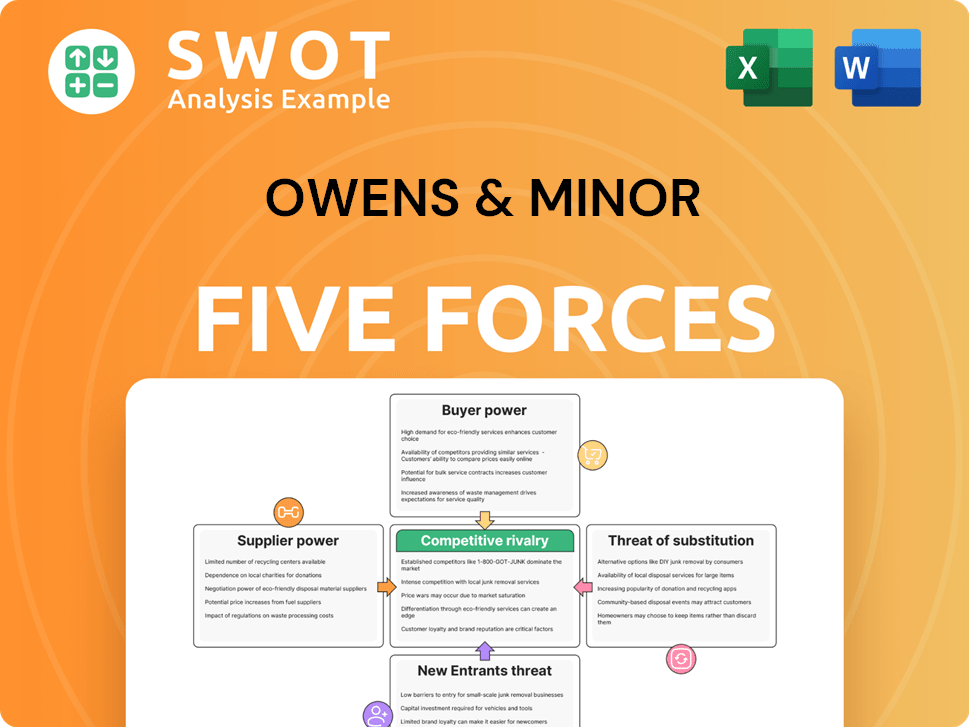
Related Blogs
- What is Competitive Landscape of Owens & Minor Company?
- What is Growth Strategy and Future Prospects of Owens & Minor Company?
- How Does Owens & Minor Company Work?
- What is Sales and Marketing Strategy of Owens & Minor Company?
- What is Brief History of Owens & Minor Company?
- Who Owns Owens & Minor Company?
- What is Customer Demographics and Target Market of Owens & Minor Company?
Disclaimer
All information, articles, and product details provided on this website are for general informational and educational purposes only. We do not claim any ownership over, nor do we intend to infringe upon, any trademarks, copyrights, logos, brand names, or other intellectual property mentioned or depicted on this site. Such intellectual property remains the property of its respective owners, and any references here are made solely for identification or informational purposes, without implying any affiliation, endorsement, or partnership.
We make no representations or warranties, express or implied, regarding the accuracy, completeness, or suitability of any content or products presented. Nothing on this website should be construed as legal, tax, investment, financial, medical, or other professional advice. In addition, no part of this site—including articles or product references—constitutes a solicitation, recommendation, endorsement, advertisement, or offer to buy or sell any securities, franchises, or other financial instruments, particularly in jurisdictions where such activity would be unlawful.
All content is of a general nature and may not address the specific circumstances of any individual or entity. It is not a substitute for professional advice or services. Any actions you take based on the information provided here are strictly at your own risk. You accept full responsibility for any decisions or outcomes arising from your use of this website and agree to release us from any liability in connection with your use of, or reliance upon, the content or products found herein.